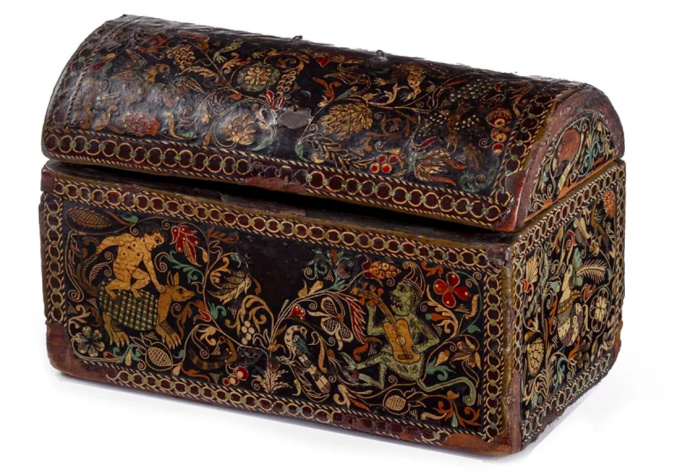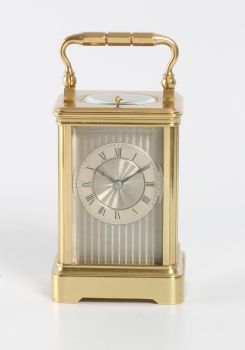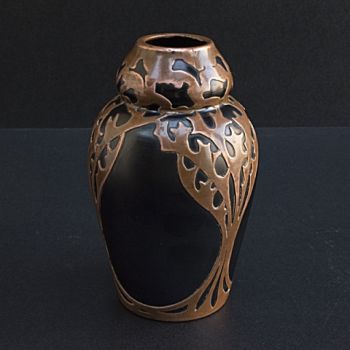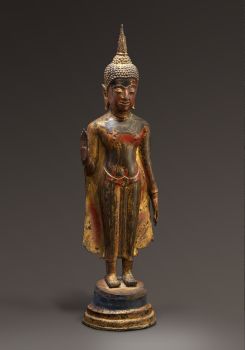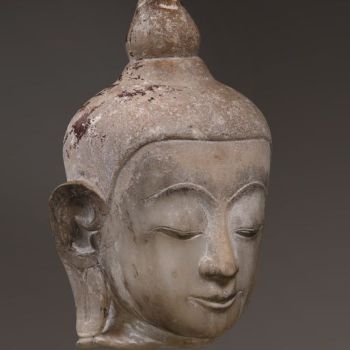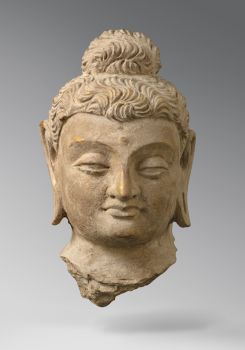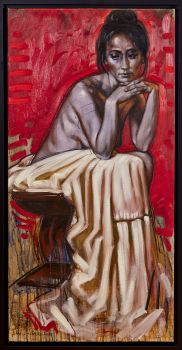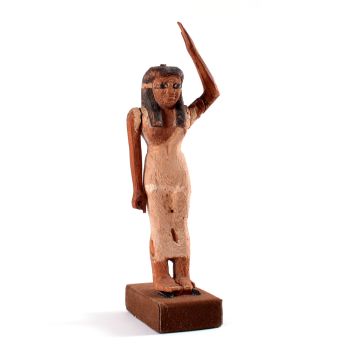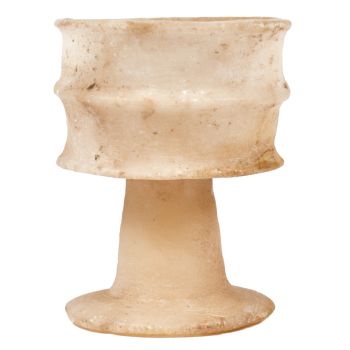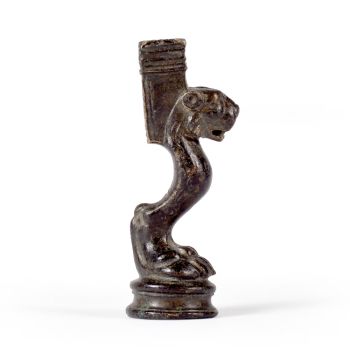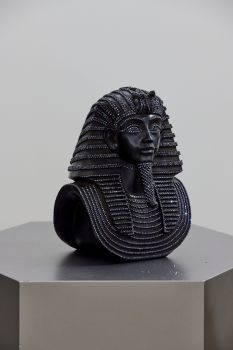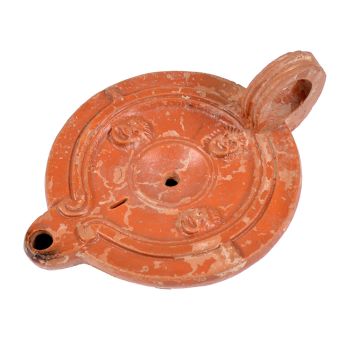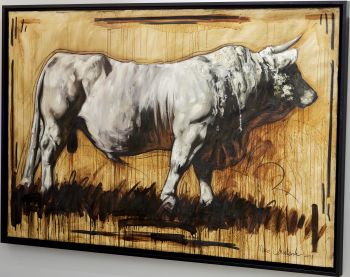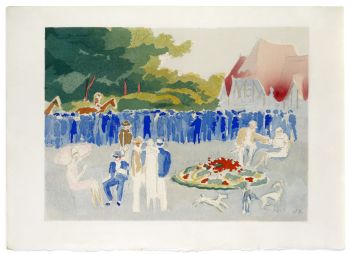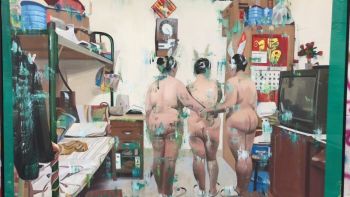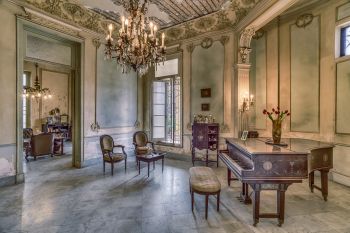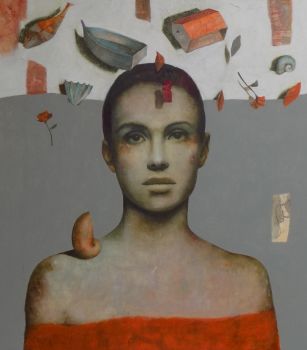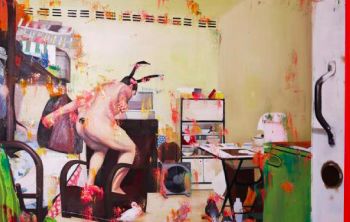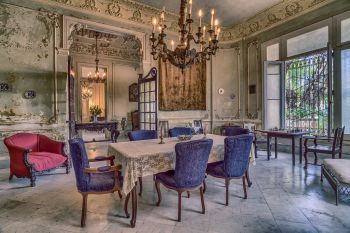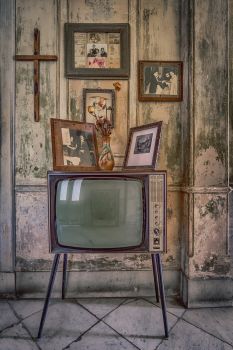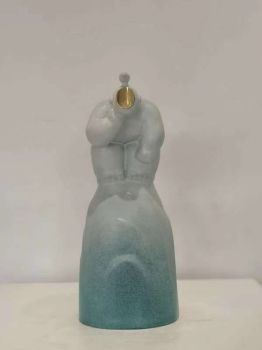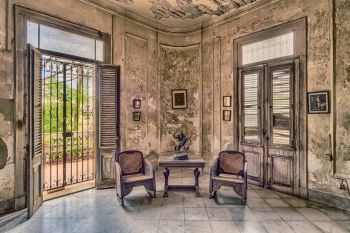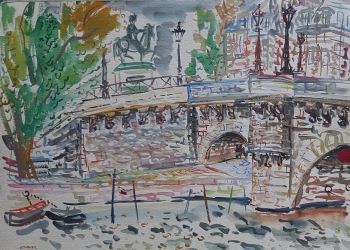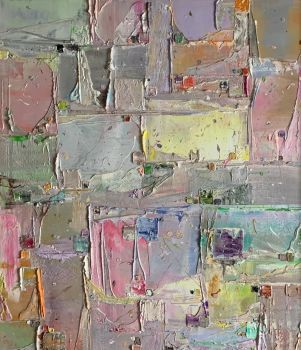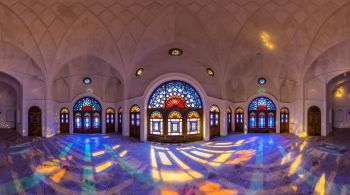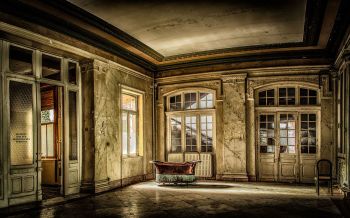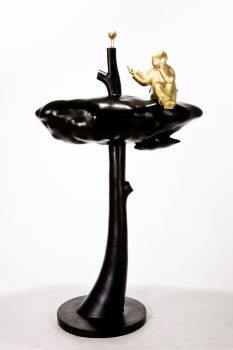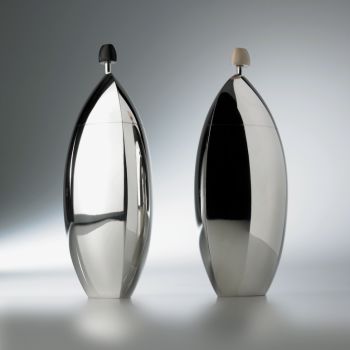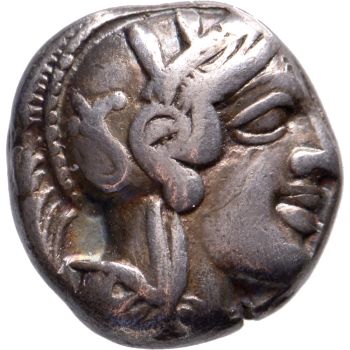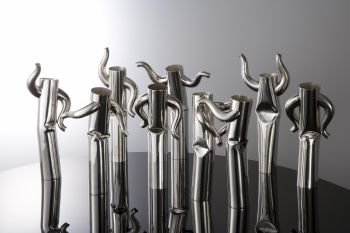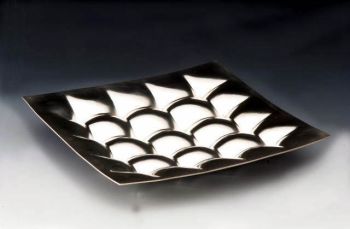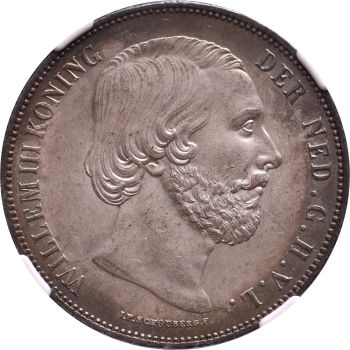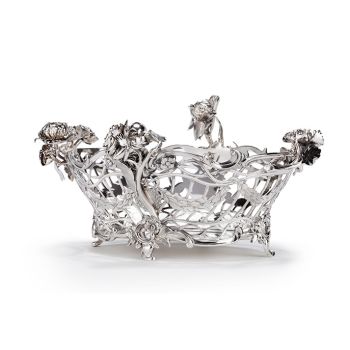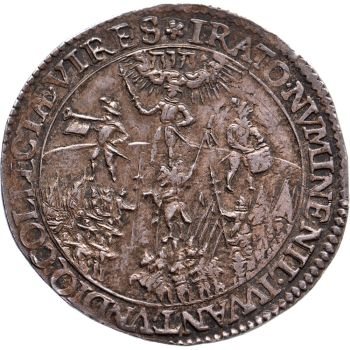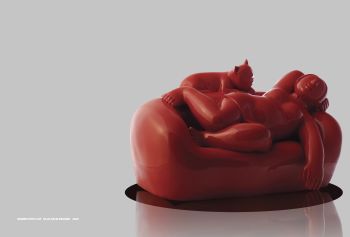An important Spanish colonial Barniz de pasto lacquer casket 1626 - 1650
Unbekannter Künstler
SilberLack
8 ⨯ 13 ⨯ 6 cm
Derzeit nicht über Gallerease verfügbar
Zebregs & Röell - Fine Art - Antiques
- Über KunstwerkAn important Spanish colonial Barniz de pasto lacquer casket with the Jesuit IHS monogram and silver mounts
Colombia, 1625-1650
L. 13.3 x W. 6.9 x H. 8.4 cm
The surface of the casket has been richly decorated in colourful barniz de pasto lacquer. The subject matter of the decoration involves, at the front; a boy riding a fantasy animal, a monkey with a human face and a bonnet playing the guitar, at the back; a predator catching a rabbit, another animal with a human face wearing a bonnet, at one side; a human figure coming out of a horn-shell, at the other side; a bird coming out of a horn-shell, the lid with two lions and all over, various birds among scrolling vines with exotic flowers and leaves. The inside of the lid is decorated with the monogram IHS, an abbreviation of the name of Jesus Christ, with a cross, and a heart pierced by three nails. This symbol was adopted by Ignatius of Loyola as general of the Jesuit Society of Jesus. Lock missing.
The indigenous lacquer traditions in Mexico and Colombia started because the demand in Spain and Spanish America for expensive Asian lacquerware exceeded the supply brought from Asia to Acapulco on the Manila galleons. Therefore, artisans in Mexico and Colombia began to apply their skills to the production of local lacquerware.
Barniz de Pasto is a lacquer-like technique made of plant extract, called mopa mopa, a translucent pale green natural sticky resin applied to wood. Mopa mopa is obtained from the garbanzo-bean-sized leaf buds of the mopa mopa tree (Elaegia pastoenis Mora), native to the tropical rain forests of southwest Colombia. The indigenous people of the Sibundoy Valley supplied the resin-covered leaf buds, pressed into blocks, to the lacquer artisans in Pasto. The long process of working the raw mopa mopa began with removing all impurities, then small amounts of the gummy resin were chewed or boiled in water to make it sufficiently elastic to stretch it into thin sheets by pulling in opposing directions by hands and teeth. Finally, the very thin sheets were applied with heath to a wooden object. The resulting layer provided an exceptionally durable, waterproof surface, impervious to most organic solvents and ready to be decorated.
The naturalist-explorers Jorge Juan and Antonio de Ulloa visited Pasto in 1740 and remarked that barniz de Pasto ‘rivalled the best Asian lacquers in its colours’ beauty, shine, and durability.’ - Über Künstler
Es kann vorkommen, dass ein Künstler oder Hersteller unbekannt ist.
Bei einigen Werken ist nicht zu bestimmen, von wem sie hergestellt wurden, oder sie wurden von (einer Gruppe von) Handwerkern hergestellt. Beispiele sind Statuen aus der Antike, Möbel, Spiegel oder Signaturen, die nicht klar oder lesbar sind, aber auch einige Werke sind überhaupt nicht signiert.
Außerdem finden Sie folgende Beschreibung:
•"Zugeschrieben …." Ihrer Meinung nach wohl zumindest teilweise ein Werk des Künstlers
•„Atelier von ….“ oder „Werkstatt von“ Ihrer Meinung nach eine Arbeit, die im Atelier oder in der Werkstatt des Künstlers, möglicherweise unter seiner Aufsicht, ausgeführt wurde
•„Kreis von ….“ Ihrer Meinung nach ein Werk aus der Zeit des Künstlers, das seinen Einfluss zeigt, eng mit dem Künstler verbunden, aber nicht unbedingt sein Schüler
•"Art von …." oder „Anhänger von ….“ Ihrer Meinung nach eine Arbeit, die im Stil des Künstlers ausgeführt wurde, aber nicht unbedingt von einem Schüler; kann zeitgenössisch oder fast zeitgenössisch sein
•„Art von ….“ Ihrer Meinung nach ein Werk im Stil des Künstlers, aber späteren Datums
•"Nach …." Ihrer Meinung nach eine Kopie (jegliches Datums) eines Werks des Künstlers
• „Unterzeichnet …“, „Datiert …“. oder „Beschriftet“ Ihrer Meinung nach wurde das Werk vom Künstler signiert/datiert/beschriftet. Das Hinzufügen eines Fragezeichens weist auf einen Zweifel hin
• „Mit Unterschrift …“, „Mit Datum …“, „Mit Aufschrift ….“ oder „Trägt Unterschrift/Datum/Beschriftung“ ihrer Meinung nach die Unterschrift/Datum/Beschriftung von jemand anderem als dem Künstler hinzugefügt wurde
Sind Sie daran interessiert, dieses Kunstwerk zu kaufen?
Artwork details
Related artworks
- 1 - 4 / 12
Unbekannter Künstler
A Surinam-themed Amsterdam long-case clock1746 - 1756
Preis auf AnfrageZebregs & Röell - Fine Art - Antiques
 Kuratiert von
Kuratiert vonGallerease Magazine
Unbekannter Künstler
EIN UNGEWÖHNLICHES INDONESISCHES SILBERGERICHTlate 17th
Preis auf AnfrageZebregs & Röell - Fine Art - Antiques
Paulus Franciscus Kromjong
Blumen vor Arearea Aka (Freude) von Gauguin '20th century
Preis auf AnfrageZebregs & Röell - Fine Art - Antiques
Unbekannter Künstler
A silver spoon commemorating Juff’ Margareta van Hoorn1656 - 1694
Preis auf AnfrageZebregs & Röell - Fine Art - Antiques
Unbekannter Künstler
Japanese transition-style lacquer coffer 1640 - 1650
Preis auf AnfrageZebregs & Röell - Fine Art - Antiques
1 - 4 / 21Unbekannter Künstler
The bell of the VOC fortress in Jaffna, Sri Lanka1747
Preis auf AnfrageZebregs & Röell - Fine Art - Antiques
 Kuratiert von
Kuratiert vonDanny Bree
1 - 4 / 16- 1 - 4 / 24
Unbekannter Künstler
EIN UNGEWÖHNLICHES INDONESISCHES SILBERGERICHTlate 17th
Preis auf AnfrageZebregs & Röell - Fine Art - Antiques
Samuel Dejong
Anatomia Blue Heritage, Hercules Open2017 - 2019
Preis auf AnfrageVilla del Arte Galleries
 Kuratiert von
Kuratiert vonGallerease Magazine
1 - 4 / 24Engelbert Kaempfer
ENGELBERT KAEMPFER BOOK1651 - 1716
Preis auf AnfrageZebregs & Röell - Fine Art - Antiques
Unbekannter Künstler
A Surinam-themed Amsterdam long-case clock1746 - 1756
Preis auf AnfrageZebregs & Röell - Fine Art - Antiques
 Kuratiert von
Kuratiert vonGallerease Magazine
Unbekannter Künstler
A large wall map of Asia by Nicolas de Fer 1647 - 1720
Preis auf AnfrageZebregs & Röell - Fine Art - Antiques
1 - 4 / 12

